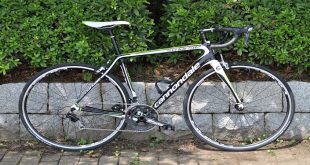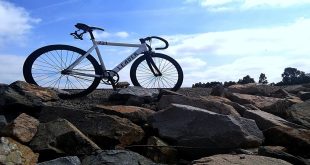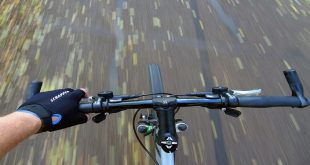Yes, it is possible to ride a mountain bike on the sea beach. The combination of sand and rugged terrain makes mountain biking an exhilarating activity by the sea.
As you pedal along the shoreline, the bike’s sturdy frame and fat tires provide stability and control, allowing you to navigate the sandy surface with ease. Whether you’re cruising along the wet sand close to the water or exploring the dunes further inland, mountain biking on the sea beach offers a unique and adventurous experience.
So, grab your mountain bike and get ready to enjoy the thrill of riding on the beautiful beaches by the sea.
The Unique Challenges Of Riding On Sand
When it comes to mountain biking, riders are no strangers to tackling rough terrains such as rocky trails and muddy paths. However, riding on the sea beach poses a unique challenge that pushes the limits of a mountain bike. The soft, shifting sand offers an unconventional terrain that requires a different set of skills and adjustments. Understanding the physical limitations of a mountain bike on the beach is crucial to ensure a safe and enjoyable ride.
Understanding The Physical Limitations Of A Mountain Bike On The Beach
Riding a mountain bike on the beach requires riders to familiarize themselves with the physical limitations that come with this terrain. One of the key factors to consider is the impact of sand on the bike’s maneuverability. The soft consistency of the sand makes it more challenging for the wheels to gain traction, affecting the bike’s overall stability and control. Moreover, the resistance of the sand can lead to a slower and more energy-demanding ride, often requiring riders to put in more effort to maintain a steady speed.
Additionally, the sand can also cause wear and tear on the bike’s components. The granular particles can get into the drivetrain, chain, and brakes, potentially causing damage or affecting their functionality. Regular cleaning and maintenance become crucial when riding a mountain bike on the beach to ensure that the bike remains in its optimal condition.
The Impact Of Sand On The Bike’s Maneuverability
Maneuvering a mountain bike on the sand requires a different technique compared to other terrains. The soft surface makes it harder to turn and can cause the bike to sink or slide. Riders need to adapt their riding style by distributing their weight more evenly, keeping a lower center of gravity, and making wider turns to maintain stability. Moreover, maintaining a consistent pedal stroke and avoiding sudden movements help improve traction and prevent the bike from losing control on the sandy surface.
Furthermore, tire selection plays a crucial role in enhancing the bike’s maneuverability on the beach. Wider tires with lower tire pressure are recommended to increase the surface area in contact with the sand, providing better traction and flotation. This allows the bike to roll over the soft surface more smoothly and reduces the risk of sinking into the sand.
In conclusion, riding a mountain bike on the sea beach comes with its unique set of challenges. From understanding the physical limitations of the bike on the sand to adapting the riding technique, riders can overcome these obstacles and enjoy the exhilarating experience of riding on a sandy beach. So, if you’re up for an adventure, grab your mountain bike, make the necessary adjustments, and have a memorable ride along the beautiful coastline.
Choosing The Right Bike For Sand Riding
Riding a bike on the sea beach is an exciting experience that allows you to enjoy the stunning coastal scenery while feeling the refreshing breeze. However, not all bikes are suitable for riding on sandy surfaces. When it comes to beach riding, it’s important to choose the right bike that can handle the challenging terrain. In this article, we will explore the characteristics to look for in a bike suitable for beach riding and discuss some options that can enhance your riding experience on the sand.
Characteristics To Look For In A Bike Suitable For Beach Riding
Before hitting the sand, it’s crucial to consider the following characteristics that make a bike well-suited for beach riding:
- Tire width: A wider tire allows for better grip and traction on loose sand, making it the most important aspect to consider when selecting a beach bike. Look for tires with widths of 3.8 inches or greater for optimal performance.
- Tire pressure: Lower tire pressure provides better flotation on sand, allowing the bike to glide smoothly over the surface. It is recommended to run your tires at around 10-15 psi when riding on the beach.
- Frame material: Opt for bikes with sturdy frames made of materials like aluminum or carbon fiber, as they offer durability and weight savings, making your beach riding experience more enjoyable.
- Gearing: Choose a bike with a wide range of gears to tackle varying terrains and adjust your pedaling effort accordingly. This will give you better control and help you easily navigate through the sand.
- Brakes: Reliable brakes are essential for maintaining control and safety when riding on sandy surfaces. Disc brakes, in particular, provide consistent stopping power even in wet or sandy conditions.
Fat Bikes: The Ideal Choice For Riding On Sandy Surfaces
When it comes to riding on sandy beaches, fat bikes are widely considered the ideal choice. These bikes are equipped with ultra-wide tires ranging from 3.8 to 5 inches in width, allowing them to effortlessly glide over sand dunes and maintain stability. The oversized tires provide excellent flotation, distributing the weight of the rider and the bike, reducing the chances of getting stuck in the sand. Fat bikes offer superb traction and control, making them a popular choice for beach riding enthusiasts.
Exploring Other Bike Options For Beach Riding
While fat bikes are the go-to option for beach riding, there are alternative bike options that can also handle sandy surfaces with ease. These include:
- Gravel bikes: Designed for off-road adventures, gravel bikes have wider tires and more relaxed geometry than traditional road bikes, enabling them to tackle sandy trails and beach paths effectively.
- Mountain bikes: Although not specifically designed for beach riding, mountain bikes with wider tires and resilient suspension systems can handle sandy terrain admirably, provided they meet the necessary tire width requirements.
In conclusion, riding a bike on the sea beach can be an exhilarating experience if you choose the right bike. Fat bikes stand out as the ideal choice for sand riding due to their wider tires, flotation capabilities, and enhanced stability. However, gravel bikes and certain mountain bikes can also be suitable for beach riding, provided they meet the crucial characteristics necessary for conquering the sand. So, pick the bike that suits your preferences and embark on a thrilling beach riding adventure!
Essential Equipment And Modifications
When it comes to riding a mountain bike on a sea beach, having the right equipment and modifications is crucial. The sandy terrain poses unique challenges that require specific adaptations to ensure an enjoyable and safe riding experience. In this section, we will explore three key aspects of essential equipment and modifications: adjusting tire pressure for better traction on sand, the importance of wider tires and their impact on stability, and installing sand-specific bike components and accessories.
Adjusting Tire Pressure For Better Traction On Sand
One of the most important modifications when riding a mountain bike on the sea beach is adjusting the tire pressure. The soft and unstable nature of sand demands a different approach than regular off-road trails. Lowering the tire pressure allows the tires to distribute weight over a larger surface area and improves traction on the sandy surface.
To achieve the optimal tire pressure for riding on sand, it is recommended to reduce it to around 10-15 psi. This lower pressure creates a larger contact area of the tire with the sand, enabling better grip and control. Keep in mind that the ideal pressure may vary depending on factors such as rider weight, tire width, and sand conditions, so some experimentation might be necessary to find the perfect balance.
The Importance Of Wider Tires And Their Impact On Stability
Wider tires play a crucial role in enhancing stability when riding a mountain bike on the sea beach. The wider surface area provides better flotation and prevents the tires from sinking too deep into the sand. This added stability allows riders to maneuver through the challenging terrain more efficiently.
For beach riding, it is recommended to use tires with widths of 2.4 inches or more. The wider profile helps to distribute the rider’s weight and reduces the risk of the tires getting engulfed in the sand. This ensures better control over the bike and minimizes the chances of an accident or loss of balance.
Installing Sand-specific Bike Components And Accessories
When it comes to optimizing your mountain bike for sea beach riding, there is a range of sand-specific components and accessories available that can greatly enhance your experience. These upgrades are designed to tackle the unique challenges posed by riding on sand and further improve your overall performance.
| Component/Accessory | Description |
|---|---|
| Wide Handlebars | Wide handlebars provide better control and stability when navigating through softer sand. |
| Tubeless Tires | Tubeless tires reduce the risk of punctures and allow for lower tire pressures without sacrificing performance. |
| Sand-Specific Forks | Designed with wider clearance and increased travel, sand-specific forks help absorb the impact from uneven surfaces. |
| Quick-Release Skewers | Quick-release skewers make it easier to remove wheels, which can come in handy for quick adjustments or repairs. |
By installing these sand-specific bike components and accessories, you can enhance your comfort, control, and overall riding experience on the sea beach.
Mastering The Techniques Of Riding On Sand
When it comes to riding a mountain bike on the sea beach, mastering the techniques of riding on sand is crucial for a smooth and enjoyable experience. Riding on loose surfaces like sand can be challenging due to the constantly shifting terrain and lack of traction. However, with the right techniques and skills, you can navigate through sandy trails with confidence and ease. In this article, we will explore the key techniques that will help you maintain balance and speed control, navigate through challenging sections, and efficiently ride uphill and downhill on the beach.
Maintaining Balance And Speed Control On Loose Surfaces
When riding on sand, maintaining balance becomes paramount. The soft, shifting terrain can destabilize your bike and make it difficult to stay upright. To maintain balance, keep your weight centered and your body relaxed, allowing the bike to move beneath you. Gripping the handlebars firmly but not tensely will give you better control.
Additionally, adjusting the tire pressure is crucial for riding on sand. Lowering the tire pressure creates a larger contact area, providing better traction and stability. But be cautious – too low pressure can cause pinch flats or damage your rims. Experiment with different pressures to find the sweet spot that works for you.
When it comes to speed control, being mindful of the terrain is essential. Riding at a moderate pace will help you maintain control and prevent sudden skids or slips. Keep your pedals level and avoid sudden or jerky movements. Gradually slowing down or accelerating will help you navigate through the sand more smoothly.
Navigating Through Challenging Sections With Proper Technique
Beaches often present challenging sections such as steep slopes, dunes, or tight turns. To navigate through these obstacles, proper technique is key.
When tackling steep slopes, shift your weight toward the rear of the bike to maintain traction on the rear wheel. Staying seated and leaning slightly back will provide stability and prevent the front wheel from lifting off the ground.
For negotiating tight turns on sand, practice leaning your body and bike into the turn while keeping your weight centered. Leaning the bike into the turn and angling your body will help maintain traction and prevent skids.
Tips For Efficiently Riding Uphill And Downhill On The Beach
Efficiently riding uphill and downhill on the beach requires employing the right techniques to overcome the sandy terrain. Here are some tips to help you:
- Uphill riding: While climbing sandy inclines, maintaining momentum is crucial. Shift to a lower gear to spin the pedals quickly and apply consistent power through each pedal stroke. Leaning forward and distributing your weight evenly between the wheels will help maintain traction and prevent the bike from digging into the sand.
- Downhill riding: When descending on sandy surfaces, keeping your weight slightly toward the rear of the bike will aid in stability and prevent the front wheel from washing out. Keep a loose grip on the handlebars and use your body as a shock absorber to absorb any bumps or uneven terrain.
Remember that practicing and adapting to the specific beach conditions will further improve your riding skills. With time and experience, you will become more confident and proficient in riding your mountain bike on the sea beach.
Practical Considerations And Safety Precautions
When it comes to riding a mountain bike on the sea beach, there are several practical considerations and safety precautions that you need to keep in mind. By understanding these factors, you can ensure a safe and enjoyable riding experience. Two key aspects to consider are choosing the right location and understanding beach regulations, as well as checking tide schedules and planning your rides accordingly.
Choosing The Right Location And Understanding Beach Regulations
To begin with, it is important to choose the right location for your mountain biking adventure on the sea beach. Not all beaches allow biking, so it’s essential to research and understand the specific beach regulations in your area. Many beaches have designated areas for biking, while others may have restrictions in place to protect sensitive ecosystems or wildlife habitats.
Before you head out, look for information on local government websites, beach visitor centers, or contact the beach management authorities. These reliable sources will guide you in identifying beaches where biking is permitted. Adhering to regulations not only ensures you enjoy a hassle-free ride, but also helps preserve the natural beauty of the beach.
Checking Tide Schedules And Planning Your Rides Accordingly
One crucial aspect of riding a mountain bike on the sea beach is to check tide schedules before venturing out. Tides have a significant impact on beach conditions, and it’s important to plan your rides accordingly. Riding at low tide provides a firmer surface, making it easier to navigate and reducing the risk of sinking into the sand.
Consulting reliable tide charts or using smartphone apps that provide accurate tide information can help you plan your rides effectively. It’s important to note that tidal conditions can change, so always check for updates on the day of your ride. By being aware of the tides, you can ensure a safer and more enjoyable experience while exploring the beauty of the beach on your mountain bike.
Ensuring Safety Through Appropriate Protective Gear
Your safety should always be a top priority when riding a mountain bike on the sea beach. Wearing appropriate protective gear can significantly enhance your safety and minimize the risk of injuries. Regardless of the beach conditions, it is crucial to wear a properly fitted helmet to protect your head in the event of a fall or collision.
In addition to a helmet, consider wearing knee and elbow pads to provide extra protection for your joints. The uneven terrain and potential obstacles on the beach may increase the chances of accidents, making these protective gears even more valuable. Furthermore, it’s advisable to wear appropriate footwear that offers good grip and traction, ensuring optimal control over your bike.
By adhering to these practical considerations and safety precautions, you can have a safe and enjoyable mountain biking experience on the sea beach. Choosing the right location, understanding beach regulations, checking tide schedules, and wearing suitable protective gear will help you make the most of your ride while prioritizing your safety.
Frequently Asked Questions For Can You Ride A Mountain Bike On The Sea Beach?
Can You Ride A Mountain Bike On The Sea Beach?
Yes, you can ride a mountain bike on the sea beach. Mountain bikes are designed to handle various terrains, including sandy surfaces. However, it’s important to choose the right tire pressure and bike model suitable for sand riding. Always be cautious of the tidal conditions and respect the beach regulations to ensure a fun and safe experience.
What Type Of Bike Is Suitable For Riding On The Sea Beach?
A fat tire bike or a beach cruiser is most suitable for riding on the sea beach. The wide tires of these bikes provide excellent stability and traction on sand, allowing for an enjoyable and effortless ride. Additionally, these bikes are built to withstand the saltwater and sandy conditions often encountered at the beach.
How Should I Prepare My Mountain Bike For Riding On The Sea Beach?
To prepare your mountain bike for riding on the sea beach, consider the following steps. Firstly, set lower tire pressure to increase traction on sand. Secondly, apply a layer of protective coating on the frame for extra rust protection. Lastly, be sure to clean and lubricate your bike after each beach ride to prevent saltwater corrosion.
Conclusion
Riding a mountain bike on the sea beach can be a thrilling and enjoyable experience. While there are certain factors to consider, such as the beach conditions and the specific type of bike, it is certainly possible to have a great time exploring the sandy terrain on two wheels.
Just ensure you take the necessary precautions and adhere to any local regulations to have a safe and unforgettable beach biking adventure.
 AmFana Pedal through life's journey: Unchain the Adventure!
AmFana Pedal through life's journey: Unchain the Adventure!





